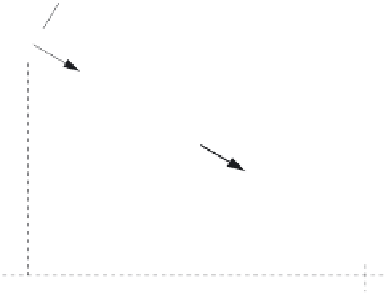Environmental Engineering Reference
In-Depth Information
4.5.2.
Rolling
The resistance to rolling comes from the deformation of the terrain, characterized
by displacement
e
of the point of application, and of the reaction of the terrain in
comparison with a theoretical point of contact in which the velocity is zero if there is
no sliding. The resistive torque is equal to N
e
, often called rolling friction, where
e
is in the order of a few millimeters on rocky terrain, and a few centimeters on
unconsolidated strata (see Figure 4.9). At the point of contact, the stresses acting are
the normal reaction N, tangential reaction of friction F and torque N
e
.
Figure 4.8.
Sliding of a boulder with initial velocity
Figure 4.9.
Rolling of a boulder without initial velocity














